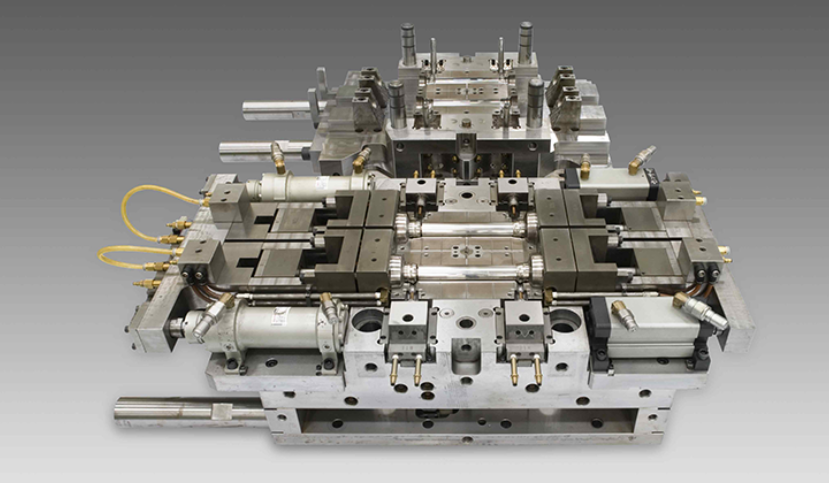Creating Efficient Plastic Crate Moulds: A Guide to Precision Manufacturing
Introduction
Plastic crates are widely used in various industries for storage and transportation purposes due to their lightweight, durable, and cost-effective nature. However, the efficiency and quality of these crates largely depend on the precision of their manufacturing process. In this guide, we will explore the key factors and techniques involved in creating efficient plastic crate moulds.
Design Considerations
The first step in manufacturing efficient plastic crate moulds is to carefully consider the design. The design should be based on the specific requirements of the intended application, ensuring that the crate is capable of withstanding the desired load capacity and providing adequate stacking strength. The design should also incorporate features for easy handling, such as ergonomic handles and smooth surfaces to prevent injury during use.
Material Selection
Selecting the right material for plastic crate moulds is crucial for ensuring their efficiency. High-quality, durable plastics such as polypropylene (PP) or high-density polyethylene (HDPE) are commonly used for this purpose. These materials offer excellent resistance to impact, temperature variations, and chemicals, ensuring the longevity and reliability of the plastic crates. Additionally, the selected material should be easy to process and mold, enabling efficient and cost-effective manufacturing.
Mould Manufacturing
The manufacturing of plastic crate moulds requires precision and accuracy to ensure the consistent production of high-quality crates. Computer-aided design (CAD) and computer-aided manufacturing (CAM) technologies are commonly employed to create detailed and precise mould designs. These technologies enable the optimization of the mould design and provide a virtual simulation to detect potential issues before the physical manufacturing process begins, saving time and resources.
Injection Molding Process
Injection molding is the most common method used for manufacturing plastic crates. The process involves injecting molten plastic into a pre-designed mould cavity and allowing it to cool and solidify. To ensure efficiency, several factors need to be considered:
1. Temperature and Pressure Control: Proper control of the temperature and pressure during the injection molding process is essential. This helps in achieving consistent and uniform material flow, reducing the chances of defects like warpage and sink marks.
2. Cooling System: Efficient cooling of the mould is crucial for achieving short cycle times and reducing energy consumption. Proper cooling channels designed within the mould enable uniform cooling, preventing deformation and improving production efficiency.
3. Venting: Adequate venting in the mould is necessary to allow the escape of air and gases during injection. Insufficient venting can result in defects like trapped air, voids, or burns, compromising the efficiency and quality of the plastic crate.
4. Mold Maintenance: Regular maintenance of the mould is essential to ensure its longevity and optimal performance. This includes cleaning, lubricating, and inspecting the mould for wear or damage. Timely maintenance prevents downtime and ensures consistent production.

Quality Control
Implementing a robust quality control system is vital for manufacturing efficient plastic crate moulds. This involves conducting regular inspections and tests throughout the manufacturing process to identify and rectify any defects or deviations. Quality control measures include dimensional inspections, material testing, and performance evaluations to ensure that the produced crates meet the required specifications.
استنتاج
Efficient plastic crate mould manufacturing requires careful consideration of design, material selection, accurate mould manufacturing, and adherence to precise injection molding processes. By following these guidelines, manufacturers can ensure the production of high-quality, durable, and cost-effective plastic crates that meet the specific needs of various industries. Continuous improvement and regular quality control measures are essential to maintain efficiency and consistency throughout the manufacturing process.
-
Injection Mold Components: The Building Blocks of High-Quality Plastic Products
2023-5-30
Injection molding is one of the most popular manufacturing processes for producing plastic parts. It involves injecting ...
عرض التفاصيل -
Aerospace Mold: Precision Engineering for Superior Performance
2023-5-15
Aerospace mold manufacturing is a complex and highly specialized field that requires precision engineering for superior ...
عرض التفاصيل -
Designing a Lightweight Plastic Chair Mould: A Perfect Solution for Comfort and Convenience
2023-8-22
Introduction Plastic chairs have become an integral part of our lives due to their versatility, affordability, and ease ...
عرض التفاصيل -
Plastic Molds: Essential Tools in Industrial Manufacturing
2024-10-19
Plastic molds play an important role as key equipment in the production of plastic products. The following is a detailed...
عرض التفاصيل -
حول كيفية حل تكلفة العفن الحقن
2022-9-15
العوامل التي تؤثر على تكلفة قوالب الحقن: مواد الأداة يمكن في بعض الأحيان تصنيع قوالب الحقن المخصصة ...
عرض التفاصيل -
Injection Mold Manufacturing manufacture – A Guide to Successful Production
2023-5-17
Injection molding is a popular manufacturing process used for creating plastic parts in large quantities. The process in...
عرض التفاصيل







